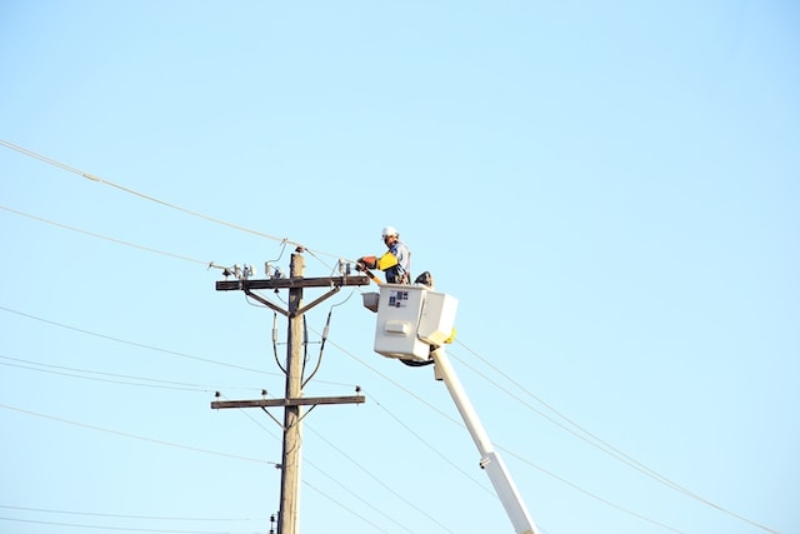
A MEWP is a versatile piece of equipment that’s used in multiple industries where employees are required to work at height. If you haven't heard of a MEWP before, don’t worry - in this blog post, we’ll cover everything you need to know about what MEWPs are and how they’re classified.
What does MEWP stand for?
MEWP stands for Mobile Elevated Work Platform. They are extremely useful pieces of equipment that enable workers to operate at height in a variety of different environments.
A MEWP is a powered access machine, meaning it can be raised and lowered by a worker on the ground or on the mobile work platform itself. The main purpose of a MEWP is to elevate an employee to a certain height to ensure that they can work safely and effectively.
What is a MEWP used for?
MEWPs are used to access high-up places. They are more stable (and can take more weight) than ladders, and in many cases they’re preferable to scaffolding because they’re easier to move around.
MEWPs can be found in all sorts of different industry sectors, including…
-
Construction – MEWPs are commonly used in the construction and maintenance of tall buildings.
-
Electrical Engineering – Electricians can use MEWPs to access high-up electrical systems, such as those found on telegraph poles.
-
Film, Stage & TV – Engineers and technicians in the entertainment industry often use MEWPs to carry out maintenance on lighting and camera equipment that’s suspended above a set.
-
Warehousing – Warehouse operatives occasionally use MEWPs to safely stack and organise products on high shelves.
-
Arboriculture – Arborists and tree surgeons sometimes use MEWPs to work on tall trees.
What are the different types of MEWP?
As we’ve seen, MEWPs can be used in many different contexts. The different kinds of MEWP can be classified by group, and then by type.
MEWP group classification
There are several types of MEWP available, each tailored to specific requirements and work environments. Here are some common categories:
a. Mobile Vertical Scissor Lifts (3a)
Scissor lifts are vertical lift platforms that operate by using linked, folding supports. They provide a stable platform that moves straight up and down, often used for indoor tasks or on flat surfaces.
b. Mobile Boom Lifts (3b)
Boom lifts feature a hydraulic arm or 'boom' with extendable sections, enabling both vertical and horizontal movement. They are ideal for tasks requiring access over obstacles or at higher elevations.
MEWP type classification
Once you've classified the MEWP's group, it's time to look at its type. A MEWP's type is determined by how the machine functions. For instance, is it driven or pushed to the location of work? Does it allow travel when in use?
Here are some of the different MEWP types:
Static Verticals (Type 1A)
These MEWPs are stationary vertical platforms and have stabilising outriggers which are deployed before use. They are designed for vertical lifting only. They have a fixed base and cannot be moved while in operation. These MEWPs are commonly used in indoor environments or on level surfaces where only vertical access is required.
Static Booms (Type 1B)
Type 1B static boom MEWPs consist of a telescopic or articulated boom mounted on a stationary base like type 1A. They provide both vertical and horizontal reach, enabling access to elevated areas. Type 1B MEWPs are suitable for tasks that require reaching over obstacles or accessing areas at height and where travel to a new work area while elevated is not required.
Mobile Verticals (Type 3A)
Type 3A MEWPs are mobile platforms that offer vertical lifting only. They are designed for moving vertically and do not have an extendable boom. These MEWPs are often compact and suitable for indoor use or applications where vertical access is required in tight spaces. This type of MEWP can be driven to a new work area while elevated.
Mobile Boom (Type 3B)
These Type 3B MEWPs are mobile platforms equipped with a telescopic or articulated boom. They can be moved during operation and provide both vertical and horizontal reach. These MEWPs are commonly used in construction, maintenance, and various outdoor applications.
There are many more examples of MEWP classification available online if you'd like to take your understanding to new heights!
Working at height: MEWP safety equipment
Working at height always comes with a risk, so it's important to take certain safety precautions when using a MEWP. MEWPs should always be selected and operated according to the work environment, manufacturer's guidelines, safety regulations, and training.
Here at SafetyLiftinGear, we offer a range of height safety equipment that is specifically designed for MEWPs in accordance with the International Powered Access Federation (IPAF) guidelines. Click the links below or contact the SafetyLiftinGear team to discuss your requirements with one of our fall protection experts.
MEWP Fall Protection Kit Adjustable Restraint Lanyard

